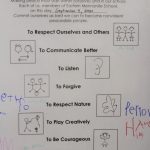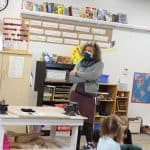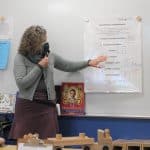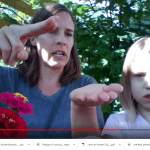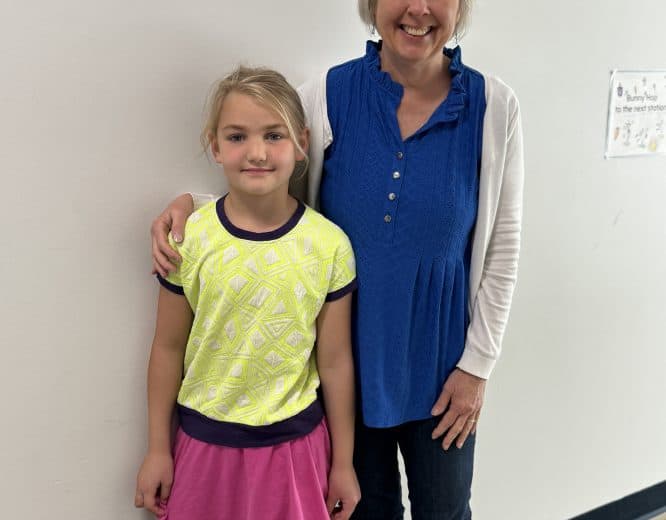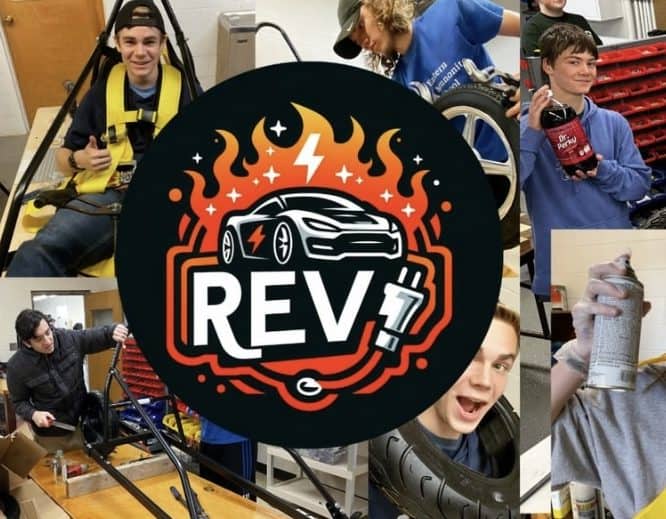Current Events Offer Time to Review Peace Pledge

What do small children pick up from adults around them as they talk about current events? What lessons might we share?
Lynette Mast, kindergarten teacher, used the recent presidential inauguration as an opportunity to talk about promises. “Have you ever made a promise to do something?” she asked, a small microphone amplifying her calm voice though her face mask. Students, wearing masks and spaced throughout the room at six foot distances, responded.
“Our peace pledge!” students quickly answered, pointing to the poster that they review throughout the year.
During the first week of each academic year, EMES students, teachers, staff and their principal review and sign the school’s pledge of non-violence. The annual gathering is accompanied by a story that highlights what it means to live together in peace and a ritual, such as washing each others hands or stacking rocks.
Each class also gathers around the peace pledge poster for their classroom so each class member can sign it. Along with the gathering, each classroom has further discussion about how they want to live, work, learn, and play together that year, often creating additional reminders for their classroom walls.
Gini Trotter, peacebuilding teacher and K-8 counselor, introduced the peace pledge in fall 2020 with a video that students watched in their classrooms. Students demonstrated American Sign Language for each tenant. During weekly peacebuilding lessons with each class, “we spend dedicated time learning about and practicing each of the tenets of the pledge of nonviolence and return to them often as a reminder,” she says.
The tenets are:
- To Respect Self and Others — To respect ourselves, to affirm others and to avoid uncaring criticism, hateful words, physical attacks and self-destructive behavior.
- To Communicate Better — To share our feelings honestly, to look for safe ways to express our anger, and to work at solving problems peacefully.
- To Listen — To listen carefully to one another, especially those who disagree with us, and to consider others’ feelings and needs rather than insist on having our own way.
- To Forgive — To apologize and make amends when we have hurt another, to forgive others, and to keep from holding grudges.
- To Respect Nature — To treat the environment and all living things, including our pets, with respect and care.
- To Play Creatively — To select activities and toys that support our school’s values and to avoid activities that make violence look exciting, funny or acceptable.
- To Be Courageous — To challenge violence in all its forms whenever we encounter it, whether at home, at school, or in the community, and to stand with others who are treated unfairly.
The pledge — available in various forms for churches, families, schools and other organizations — was developed by The Institute for Peace and Justice in St. Louis, Missouri.
See coverage of the 2018 peace pledge gathering with handwashing, and the 2019 gathering with rock formations.


